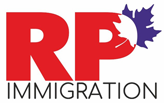Big news is coming out of Canada for tech professionals working in the United States. If you’re currently in the U.S. on an H-1B visa or know someone who is, there’s a new fast-track immigration option that just might change everything. Starting soon, Canada will open the doors to up to 10,000 H-1B visa holders through a new, tech-friendly immigration stream. The goal? To attract highly skilled tech talent looking for more stability and long-term work opportunities.
This shift is part of Canada’s broader plan to become a global destination for skilled workers. So, what’s the deal, and how could this impact tech professionals and the North American job market?
Why Canada Is Looking to H-1B Workers
Let’s start with the basics. An H-1B visa allows foreign professionals, especially in tech, to work in the U.S. for several years. But there’s a catch — it’s temporary and comes with strict caps and lots of uncertainty. Many skilled workers find themselves stuck in long green card backlogs or never getting picked in the annual visa lottery.
Canada sees this as an opportunity. With its own growing tech industry needing top talent, Canadian immigration officials are inviting H-1B visa holders to bring their skills — and in many cases, their families — north. It’s a win-win for both the individuals seeking stability and the Canadian economy looking to grow.
How the New Fast-Track Pathway Works
So, how does this new program actually work? Canada’s Immigration Minister recently announced that 10,000 U.S.-based H-1B visa holders will be eligible to apply for an open work permit, valid for up to three years. This permit will allow them to work for nearly any employer in Canada — no job offer required.
Here’s the best part: approved applicants can bring their spouses and dependents too. And those family members will also become eligible for study or employment opportunities while living in Canada. Essentially, this isn’t just a job offer — it’s a fresh start.
Eligibility Requirements for H-1B Holders
To qualify for the new Canadian immigration pathway, you must:
- Hold a valid H-1B visa
- Be currently residing in the United States
- Have the necessary background to contribute to the tech or innovation sector
Canada has outlined that this stream will focus on attracting workers with experience in technology and science-related fields — think software developers, data scientists, AI specialists, and more. While the full list of eligible occupations isn’t public yet, tech professionals will certainly be at the forefront.
Why Tech Workers Are Thinking About Moving North
Let’s face it — the U.S. immigration process can be both stressful and slow. Many talented individuals live with constant uncertainty under the H-1B system, unsure if they’ll be able to stay in the country after just a few years of contributing to top companies.
Canada, on the other hand, is pitching itself as a more stable alternative. With faster processing times and a clearer path to permanent residency and citizenship, many workers see a future there. Plus, cities like Toronto, Vancouver, and Montreal have booming tech scenes and a high quality of life — without the cost and legal rollercoaster of Silicon Valley.
The Impact on the U.S. and Canada’s Tech Industries
Could this shift cause a brain drain in the U.S.? Possibly. If even a fraction of the 600,000+ H-1B holders in the U.S. take up Canada’s offer, it could be a serious loss to American companies. But for Canada, it’s a potential game-changer.
This fresh stream of experienced, English-speaking tech professionals could help fuel startups, support innovation, and fill growing gaps in the Canadian labor market. And because the program allows people to work across sectors and employers, it adds the kind of flexibility that helps a tech ecosystem thrive.
Part of a Bigger Talent Strategy
This new immigration stream isn’t a one-off. It’s part of Canada’s larger “Tech Talent Strategy,” which includes:
- New and faster immigration pathways for STEM workers
- Opportunities for digital nomads and remote workers
- Updates to existing work permit programs to make them quicker and easier
Canada isn’t just opening a side door for talent; it’s building a new front entrance.
How to Apply — What We Know So Far
While the application process hasn’t gone live yet, it’s expected to open shortly. Officials say they will start accepting applications on a specific date and will close the program either when 10,000 applications have been received or after a set period, whichever comes first.
That means acting quickly will be key. Interested professionals should gather all relevant documents — proof of H-1B status, work history, educational credentials, etc. — and keep an eye on updates from Immigration, Refugees and Citizenship Canada (IRCC).
What This Means for You
If you’re an H-1B visa holder in the U.S., this could be a life-changing opportunity. Whether you’re tired of the uncertainty, looking for a better work-life balance, or simply want more options for your family, Canada is giving you a serious reason to consider a move.
Even if you’re not quite ready to pack up and go, keeping an eye on developments in Canadian immigration could benefit your future. With more flexible and inclusive policies, Canada continues to position itself as a top destination for global talent — especially in the fast-paced tech world.
Final Thoughts
In a world where borders and opportunities aren’t always aligned, Canada’s new immigration pathway offers a rare combination: opportunity, security, and room to grow. For thousands of skilled professionals stuck in limbo, this new fast-track system might be the key to unlocking their next big chapter.
If you’re eligible, why not explore your options? And if you’re working with or hiring H-1B professionals in the U.S., it may be time to rethink your talent strategy — because Canada is officially rolling out the welcome mat.











